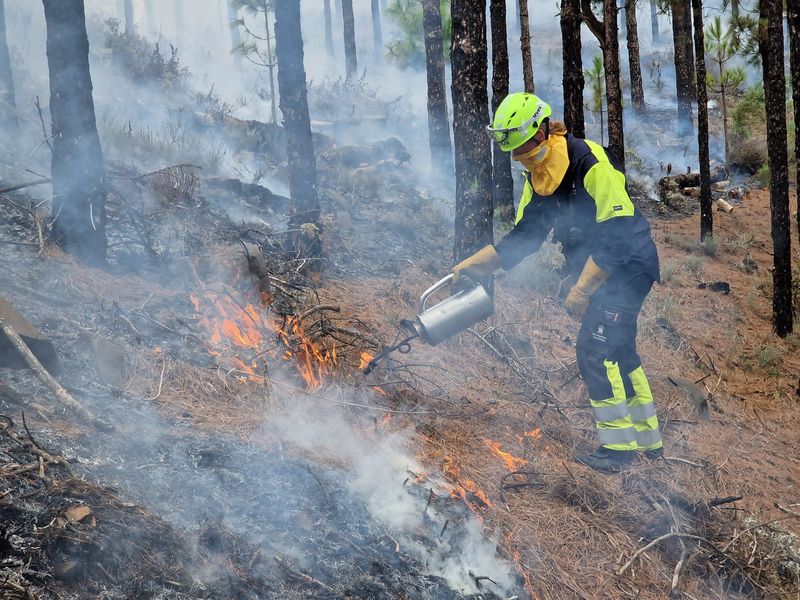The Interfaz project aims to provide knowledge and propose actions for a comprehensive management of the urban-forest interface in order to minimize fire risks. To do this, Interface collects data that allows the classification of the current and potential uses of the territory in the urban-forest interface, and thus propose protection actions, biomass management and evacuation plans against forest fires.
“Right now we are carrying out the first Interfaz action in the municipality of Calonge (Girona), which was selected as a pilot for the project, due to the interest shown by the town hall in implementing innovative fire risk reduction strategies. In addition, it is an area that combines very interesting elements of risk management, such as tourism and the historic Great Forest Fires”, points out Guillem Canaleta, from the projects area of the Pau Costa Foundation
The Cabanyes neighbourhood is located in the outskirts of Calonge. Between Cabanyes and the urban area of Calonge, there’s a five-hectare forest strip that the Forescat company has cleared and prepared so that, soon, it can be managed by grazing herds.

“In Calonge, we have carried out felling and clearing work to leave the space prepared to allow access for herds that can now graze with the new grass that will grow. To do this, we have followed the criteria set by fire prevention regulations. Thus, we have left a maximum of 30% of shrubby vegetation, separated from each other, guaranteeing a minimum separation of eight meters between the trees, and pruning of these. In this case, the opening was already done and we have only cut down some dead trees”, comments Jordi Madrid, from the company Forescat.mpresa Forescat.


The intervention in Calonge is an example of sustainable use of the urban-forest interface. In accordance with the Interfaz objectives, it involves the conservation of pastures and the creation of a firebreak, as well as contributing to the maintenance of productive rural areas, traditional landscapes, and the conservation of natural heritage.
“After preparing the strip, we are now talking with various farmers in the area so that they can take their herds to the land and thus be able to carry out maintenance on the work carried out by Forescat. The idea is to take advantage of the low season of tourism (late autumn, winter and early spring) to reduce the load of vegetation around urbanizations with regular animal visits. In this way, in summer, a time of maximum fire danger and with a greater presence of tourists, the vulnerability to fire of these urbanizations and their residents is significantly reduced”, adds Guillem Canaleta.
The work on the strip is being done in collaboration with the Calonge town hall, committed to managing the town’s interface to reduce the risk of fire, and with the Diputació de Girona, who will monitor the vegetation and has been implementing strategies to promote the management of the interface in the municipalities of the province for years.
Interfaz is a project of supra-autonomous operational groups, co-financed by the European Agricultural Fund for Rural Development (EAFRD) and the Administración General del Estado (AGE). The project’s operational team is made up of various agents related to territorial management, innovation and the agroforestry productive framework. Specifically, the following institutions and companies are part of Interfaz: Cesefor, Föra, Tecnosylva, Seaga, Aeromedia, Diputació de Girona, and the Pau Costa Foundation.
El grupo operativo Interfaz ha recibido para su proyecto de innovación una subvención de 516.241,82€. Dicho importe es cofinanciado al 80% por el Fondo Europeo Agrícola de Desarrollo Rural (FEADER) y al 20% por fondos de la Administración General del Estado (AGE), tal como se establece en el Real Decreto 169/2018, de 23 de marzo.
El organismo encargado del contenido es el GO INTERFAZ. La Dirección General de Desarrollo Rural, Innovación y Formación Agroalimentaria (Ministerio de Agricultura, Pesca y Alimentación) es la autoridad de gestión encargada de la aplicación de la ayuda del FEADER y nacional correspondiente.
Comisión Europea: Área de Agricultura y desarrollo Rural







